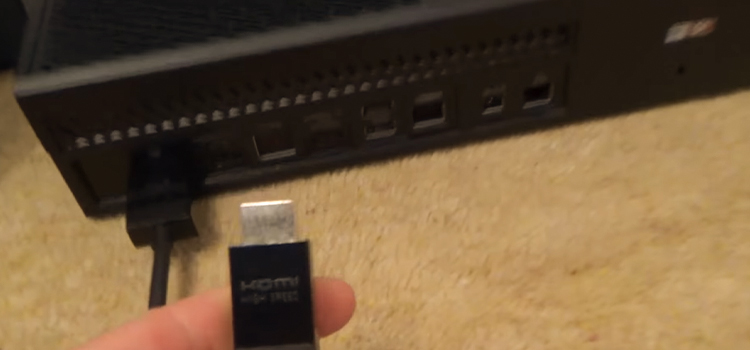How to Trace Coax Cable (4 Methods)
The coax cable is generally responsible for supplying the television and internet signal. The fact is tracing a cable is quite difficult even though it’s your house. It can go from the roof or run underground through the rooms’ walls or ceilings and then to the destination point.
To make it convenient, we’re going to provide you with some effective techniques to simplify the whole process. You just need some tracing tools.
So, without any further ado, let’s get started!

Procedures to Trace Coax Cable
First and foremost, you need to arrange some tools before starting to trace. A coax cable tracer is basically a small device with the necessary functions. Some of them are capable of mapping locations and providing relevant information.
Therefore, you’ll need a probe device, toner, foil, cable tester, stud finder, and colored tape. There’re different solutions for different situations. Let’s go through them one by one.
1. Trace Cable Using Multimeter
When there’re lots of cables to deliver different signals to multiple devices and you’ve to locate the right one, then should use a multimeter and foil.
Step 1: First, for measuring resistance, rotate the dial knob to ohms settings to switch the multimeter to continuity mode.
Step 2: Then plug the black and red probes in the COM sockets and V.
Step 3: Now, put a little bit of foil inside the cable’s jack. This way the cable will get shorted out.

Step 4: After that, test the cables by touching the red probe lead on the outer connector and the black probe lead on the inner copper conductor.

Symptom 1 – If you hear a beeping noise that means the two wires are connected. That’s how you find it.
Symptom 2 – The primary read is 0. Nonetheless, testing the cables, it’ll show different results. But there’ll be one particular result that is unique from the others. This is the one you needed.
2. Trace Cable Using Speaker Module
When there’re a few cables going to several locations and are connected to several devices, you must use a cable tester to locate exactly where the cable goes. Those devices contain a sending function to send a unique signal.
Step 1: First, connect a jack to the preferred sender device.
Step 2: Check each coax cable using a toner.
In this case, you’ll hear a tone in the speaker module when you connect the right coax cable.
3. Trace Cables By Their One End
While tracing, if you find one end or a jack of the cable but are unable to access the other end, that’s high time to use the toner again.
Step 1: Get the tone generator device and connect it to the accessible end of the cable.
Step 2: Then the toner will register the signal transferred by the generator and make a sound. This will help you to find the cable.

NOTE: If you face difficulties to determine the cables precisely, you can surely trace the cables visually.
4. Trace Cables By Tapping
Tracing coax cables becomes so much more challenging when the cables are threading through the ceilings or walls in your rooms. But don’t worry! Just follow the steps accordingly –
Step 1: First of all, check properly for all obvious signs of the cable routes.
Step 2: When you determine where the cable goes, use the stud finder for tracing any metal (screws, nails) on that surface that should be holding the cables.
If you don’t notice anything then consider tapping on that portion of the ceiling or wall. If you hear a hollow sound, it means the cables are threading behind that portion.
NOTE: When the cables are large in number and you don’t want to get confused with them while identifying, use colored tape to mark them.
Frequently Asked Questions (FAQs)
How can I know if my coax cable has a signal?
You can check this by plugging your cable modem into each cable outlet to verify connectivity and signal. If the modem connects normally, it indicates a signal is available. Otherwise, you don’t have a signal.
Which one is a worthy tool to trace electrical cables?
Wire Tracers are worth mentioning in this case. They’re highly designed to trace cables that are hard to locate or reach and easily applicable in any home or commercial environment.
How can I find my coax outlet?
It’s pretty easy to find. In your room, check for an outlet that has a tiny, metal connector. Basically, this is the outlet from where your TV connection cable comes.
Are all coax cables the same?
Despite transferring the same type of signal, not all the coax cables are the same. They differ from each other based on size, component, and shielding. Each type of coax cable is special for particular operations.
Conclusion
As you can see, tracing coax cables isn’t that difficult unless you don’t have essential tools with you. That’s why if you can afford the tools, you can simply trace the cables within a short period by applying the methods mentioned above. Feel free to knock for further queries.
Subscribe to our newsletter
& plug into
the world of technology





